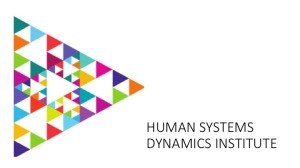 Some weeks ago, I was driving my two granddaughters home after dinner. It was only dusky-dark, but the full moon was already visible. Six-year-old Claire saw it first: “See the moon! It’s so big tonight! Is it a full moon yet?” When two-year-old Brooke spotted it, she squealed, “Moon! Moon! Moon! Ball! Moon! Ball!”
Some weeks ago, I was driving my two granddaughters home after dinner. It was only dusky-dark, but the full moon was already visible. Six-year-old Claire saw it first: “See the moon! It’s so big tonight! Is it a full moon yet?” When two-year-old Brooke spotted it, she squealed, “Moon! Moon! Moon! Ball! Moon! Ball!”
They were both—from different perspectives—noticing, naming, interpreting patterns. They were learning without paying attention to the process.
Learning happens whether we pay attention or not. The brain is a learning organ, and the healthy brain must learn—that’s what it does. When human beings engage with the world, we learn. We notice, name, and make sense of patterns in our experiences.
If we think of “learning” in this way, we can see it daily. Hourly. Minute-by-minute. Learning doesn’t have to be a deliberate (or painful) process, but in schools, where our business is learning, we need to make the process more visible and deliberate. We need to set conditions so that learning can happen. The question is this: How do we ensure that this natural and necessary learning process happens every day, for every student?
This is not a new question. (John Dewey had quite a bit to say about it, for example.) But across the complex landscape of teaching and learning in schools today, educators and policy-makers have yet to answer that question in a coherent or systemic way. We see “best practices,” mandated programs, and accountability schemes, but none of those have yet answered that question in a coherent or sustainable way.
Here’s an alternative. It’s not an answer, but it’s a way to search for answers—Adaptive Action. Adaptive Action is a deceptively simple inquiry/action cycle that makes learning a systemic function in complex system.
With Adaptive Action, we try to frame a deliberate learning process with three questions:
- What? — What do we notice? How do those experiences, observations, perceptions create patterns?
- So what? — So what do these patterns mean? to us? to others? What might have caused these patterns to form in this way? How might they trigger new patterns?
- Now what? — Now what shall we do next? Now what are our new questions?

Adaptive Action is not about conducting a long-term inquiry before taking action; nor is it a series of action steps before a summative evaluation. It is an iterative cycle that integrates inquiry and action at each moment. It’s about always and ever taking an inquiry stance. What is happening? So what does it mean? Now what shall we do?
Just a few days ago, I was again driving the granddaughters home after dinner. This time, we couldn’t locate the moon. . . “Where’s the moon?” Brooke wondered. “Where’s the ball moon?” she demanded again, almost in tears. Uh-oh—an interruption to the pattern that had been so noticeable just weeks before. What happened to our moon?
Older sister Claire tapped on the window and asked a passing car: “Excuse me. Have you seen the moon?”
It was another Adaptive Action cycle at work. And another lesson about learning.
More Information
Eoyang, G. H. and Holladay, R. (2013). Adaptive action: Leveraging uncertainty in your organization. Palo Alto, CA: Stanford University Press.
Patterson, L., Holladay, R., and Eoyang, G. (2013). Radical rules for schools: Adaptive Action for complex change. Circle Pines, MN: Human Systems Dynamics Institute.
Credits:
Photo: The Moon – Facts About The Moon For Kids www.planetsforkids.org
This blog was first posted to http://www.generative-learning.org in March 14, 2014.


